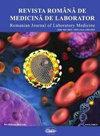Non-inhibitory effects of the potent antioxidant C-phycocyanin from Plectonema sp. on the in vitro glycation reaction
IF 0.5
4区 医学
Q4 MEDICINE, RESEARCH & EXPERIMENTAL
引用次数: 4
Abstract
Abstract When glucose and Amadori products are auto-oxidized, glycation occurs, resulting in the formation of early (Amadori) and late advanced glycation end products (AGEs), as well as free radicals. Glycation and an increase in free radical activity induce diabetic complications. Antioxidant and antiglycation compounds may aid in the prevention of oxidation and glycation. The goal of this study was to assess the antiglycation and antioxidant capacity of C-phycocyanin (C-PC) derived from Plectonema sp. The DPPH (1, 1-diphenyl-2-picrylhydrazyl), nitric oxide, hydroxyl radical scavenging activities and ferric ions reducing antioxidant power (FRAP) assays were used to assess antioxidant activity, while an in vitro bovine serum albumin-methyl glyoxal glycation (BSA-MG) model was used to assess glycation inhibitory potential. Glycation inhibition was measured using a variety of spectroscopic and biochemical parameters, including UV-visible & fluorescence spectroscopy, ketoamine, carbonyl and hydroxymethyl furfural content, as well as free lysine & free arginine estimations. In vitro, C-PC exhibited dose-dependent potent antioxidant activity, but lacked significant antiglycation potential. As a result, it is recommended that further studies be conducted to evaluate the antiglycation potential of C-PC.Plectonema sp.强抗氧化剂c -藻蓝蛋白对体外糖基化反应的非抑制作用
当葡萄糖和Amadori产物被自动氧化时,糖基化发生,导致早期(Amadori)和晚期糖基化终产物(AGEs)的形成,以及自由基的产生。糖基化和自由基活性增加可诱发糖尿病并发症。抗氧化剂和抗糖化化合物可能有助于防止氧化和糖化。本研究的目的是评估来自Plectonema sp.的c -藻青蛋白(C-PC)的抗糖化和抗氧化能力。采用DPPH(1,1 -二苯基-2-picrylhydrazyl),一氧化氮,羟基自由基清除活性和铁离子还原抗氧化能力(FRAP)测定抗氧化活性,并采用体外牛血清白蛋白-甲基乙二醛糖化(BSA-MG)模型评估糖化抑制潜力。糖基化抑制的测定采用多种光谱和生化参数,包括紫外可见光谱和荧光光谱,酮胺,羰基和羟甲基糠醛含量,以及游离赖氨酸和游离精氨酸的估计。在体外,C-PC表现出剂量依赖性的强抗氧化活性,但缺乏显著的抗糖化潜能。因此,建议进行进一步的研究来评估C-PC的抗糖化潜能。
本文章由计算机程序翻译,如有差异,请以英文原文为准。
求助全文
约1分钟内获得全文
求助全文
来源期刊

Revista Romana De Medicina De Laborator
MEDICINE, RESEARCH & EXPERIMENTAL-
CiteScore
0.31
自引率
20.00%
发文量
43
审稿时长
>12 weeks
期刊介绍:
The aim of the journal is to publish new information that would lead to a better understanding of biological mechanisms of production of human diseases, their prevention and diagnosis as early as possible and to monitor therapy and the development of the health of patients
 求助内容:
求助内容: 应助结果提醒方式:
应助结果提醒方式:


